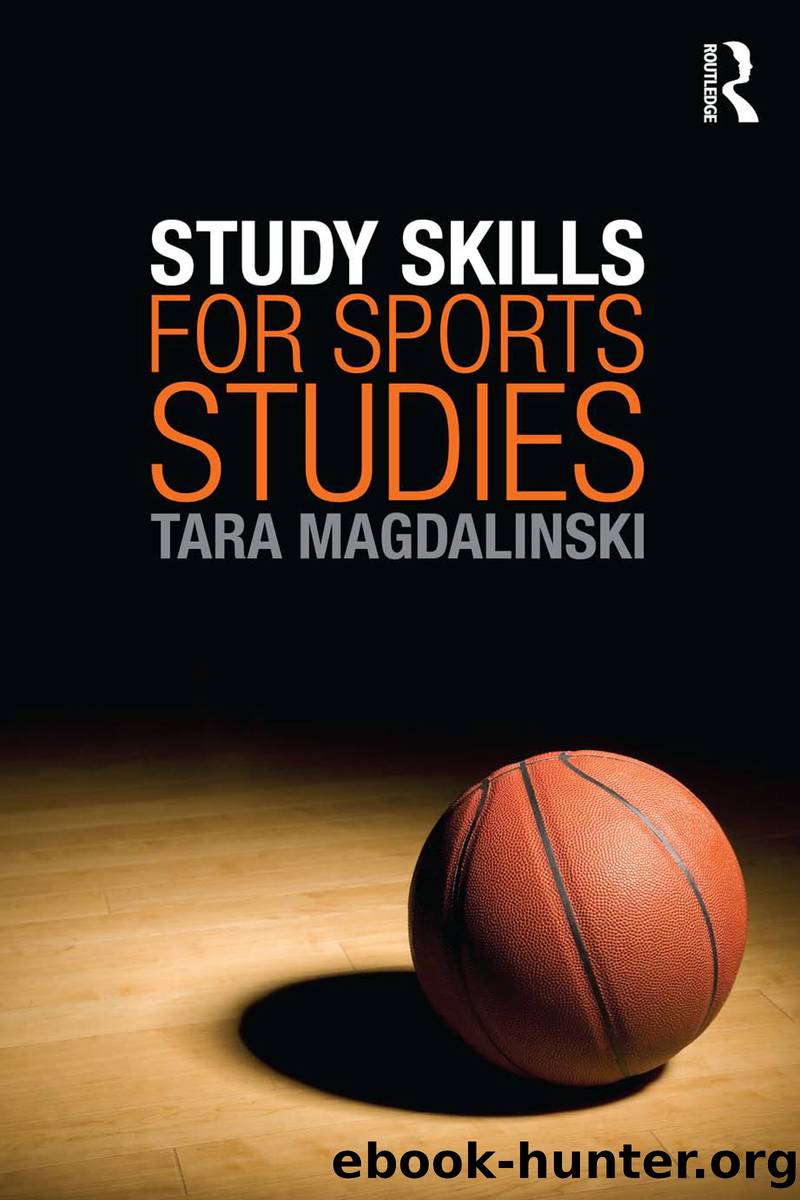Study Skills for Sports Studies by Magdalinski Tara;

Author:Magdalinski, Tara; [Magdalinski, Tara]
Language: eng
Format: epub
Publisher: Taylor & Francis Group
Published: 2022-04-13T00:00:00+00:00
It may be more appropriate to break a main point into two paragraphs (or more in longer papers). This is a useful technique if there are two or more aspects to the point or if the evidence is too detailed to include in one paragraph. If you decide to split a main point into two paragraphs, you will need a topic sentence for each one and you will still need to link each paragraph to the next:
One of the main reasons that teenagers drop out of organized sport is body image. Girls, in particular, are often concerned that physical activity detracts from what they perceive to be âfeminineâ. Several studies suggest that girls are less inclined to participate in activities that may make them look too masculine (Whitehead and Biddle, 2008; Guillet et al., 2000). Whitehead and Biddle (2008) argue that most inactive teenage girls are concerned that being physically active will negatively affect their appearance, as playing sport involves exertion that can cause them to perspire. This is often viewed as masculine within their social groups, and teenagers will typically avoid situations that position them outside the social norms of the group. Changes during puberty can provoke further self-conscious behaviour, heightened in situations where a girlâs body is more exposed or she is required to wear tight-fitting uniforms during physical education or matches (Allender et al., 2006; Whitehead and Biddle, 2008). While girls have specific body image concerns, boys are not immune to this issue.
Teenage boys also find sport a challenging experience as a result of concerns about their physical appearance. Those who have not yet gone through puberty may be concerned about revealing their boyish bodies in front of girls or those with more mature masculine physiques. Ricciardelli et al. (2006) identify that improved social status and popularity are motivations to play sport, whereas Davison (2000) acknowledges that not excelling in physical education exposes boys to questions about their sexuality or even physical assault. Although body image concerns are significant, it is also important to recognize that for many teenagers, the main obstacle to participating in sport is simply a matter of time.
Download
This site does not store any files on its server. We only index and link to content provided by other sites. Please contact the content providers to delete copyright contents if any and email us, we'll remove relevant links or contents immediately.
Life 3.0: Being Human in the Age of Artificial Intelligence by Tegmark Max(5193)
The Sports Rules Book by Human Kinetics(4079)
The Age of Surveillance Capitalism by Shoshana Zuboff(3991)
ACT Math For Dummies by Zegarelli Mark(3855)
Blood, Sweat, and Pixels by Jason Schreier(3498)
Unlabel: Selling You Without Selling Out by Marc Ecko(3474)
Hidden Persuasion: 33 psychological influence techniques in advertising by Marc Andrews & Matthijs van Leeuwen & Rick van Baaren(3302)
Urban Outlaw by Magnus Walker(3246)
The Pixar Touch by David A. Price(3220)
Bad Pharma by Ben Goldacre(3102)
Project Animal Farm: An Accidental Journey into the Secret World of Farming and the Truth About Our Food by Sonia Faruqi(3019)
Brotopia by Emily Chang(2899)
Kitchen confidential by Anthony Bourdain(2834)
Slugfest by Reed Tucker(2807)
The Content Trap by Bharat Anand(2781)
The Airbnb Story by Leigh Gallagher(2707)
Coffee for One by KJ Fallon(2423)
Smuggler's Cove: Exotic Cocktails, Rum, and the Cult of Tiki by Martin Cate & Rebecca Cate(2340)
Beer is proof God loves us by Charles W. Bamforth(2252)
